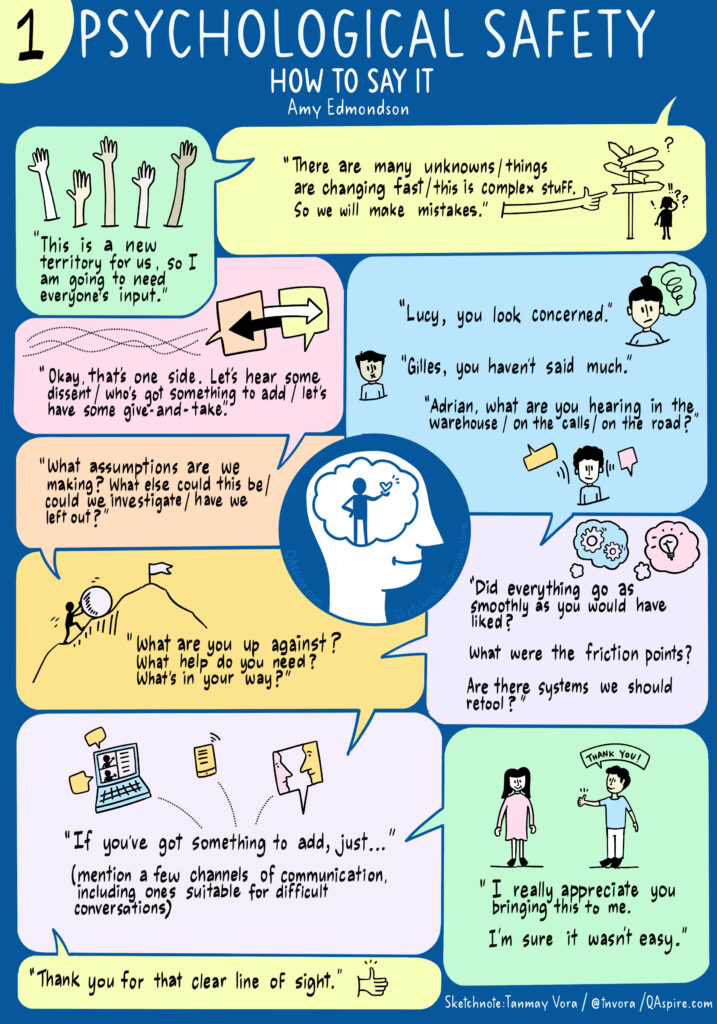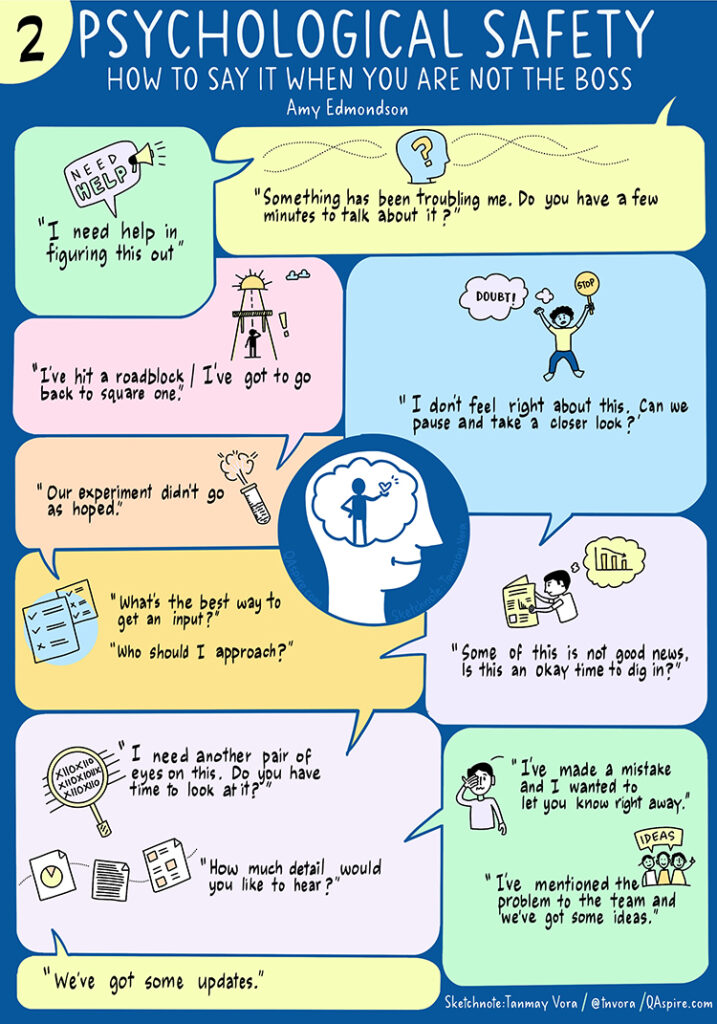Conversations That Build Psychological Safety
Tanmay Vora
Growth in today’s world is driven by how talented people bring their best ideas on the table, work with each other in a conducive environment and choose to deliver their best effort in order to achieve the desired outcome.
Companies often do great at recruiting the most talented people but fail at providing them a safe environment that enables people to exert their discretionary effort – that people do the work because they “want” to do it rather than “have” to do it.
Amy Edmondson, in her book, “The Fearless Organization: Creating Psychological Safety in the Workplace” defines “Psychological Safety” as –
“Psychological Safety is broadly defined as a climate in which people are comfortable expressing and being themselves. More specifically, when people have psychological safety at work, they feel comfortable sharing concerns and mistakes without fear of embarrassment or retribution.”
Conversations that leaders have with their people are the drivers of psychological safety. The words that people use when dealing with conflicts, failures and during developmental conversations really define the culture of the team or organization.
Psychologically safe conversations facilitate people in speaking up, promoting a productive debate, creating space for new ideas to emerge, helping people learn from their failures (and making it safe to fail) and embrace a productive conflict.
-
What do these conversations look like in action?
-
What do leaders say in such conversations?
-
If you’re not a boss, what would you say and how?
Amy shared mini-scripts for Psychological safety in her Twitter posts (here and here). Here’s a sketchnote format I created since I find it to be a useful reference for people at all levels.
Part 1 – How to Say it If You’re a Leader

Part 2 – How to Say it When You’re Not the Boss

Updated: Visual Leadership Pack of 60+ HD Sketchnotes
If you liked the sketchnote summary above, check out the Visual Leadership Pack of HD Sketchnotes – a compilation of high-resolution sketchnotes with 68+ powerful (and timeless) ideas to elevate your leadership and learning game.
Related Reading and Sketchnotes at QAspire:
- Building a Culture of Adaptability
- Signs of a High-Trust Environment
- Micro-Habits of High Impact Managers
- On being a Heart-Centered Leader
- Leadership Starts with Trust
- Leaders Need Three Kinds of Focus

I just want to add that if you are a leader who likes the post above, you also may be interested to read book Nonviolent Communication: A Language of Life by Marshall B. Rosenberg, Arun Gandhi
https://www.goodreads.com/book/show/71730.Nonviolent_Communication